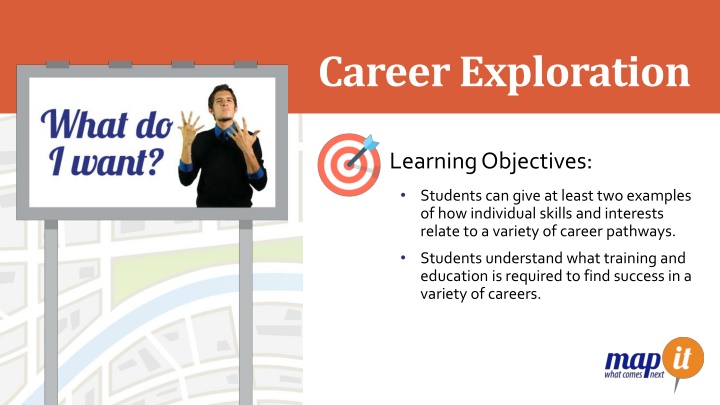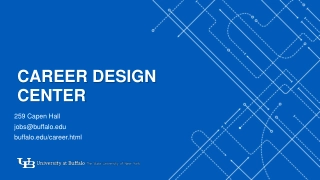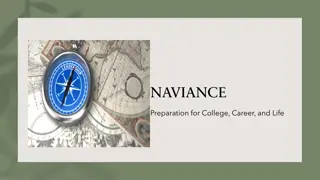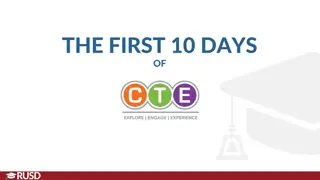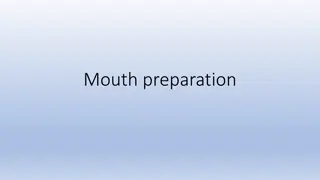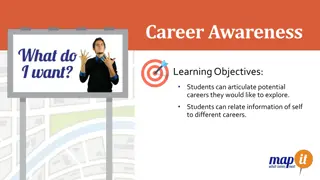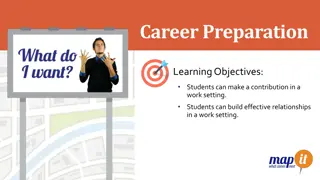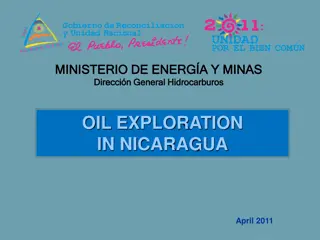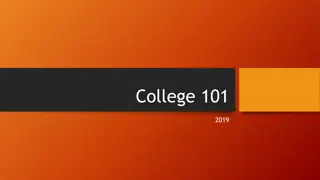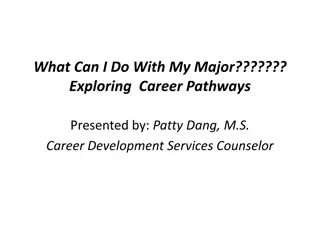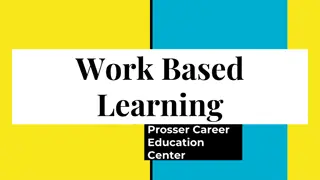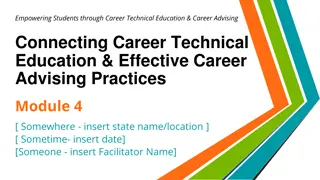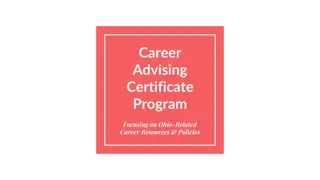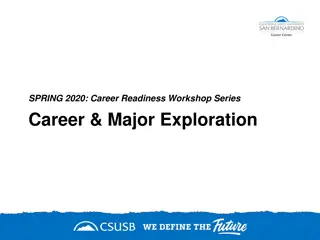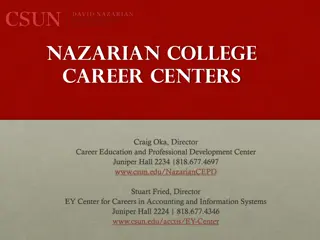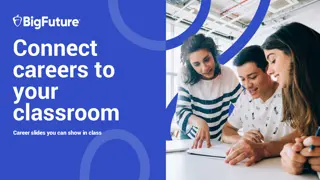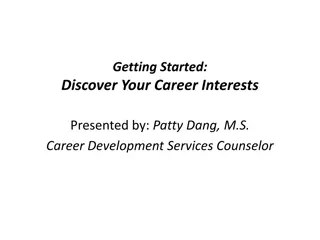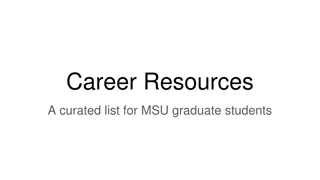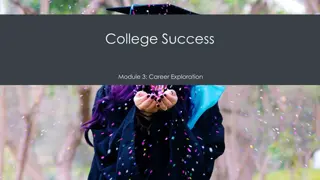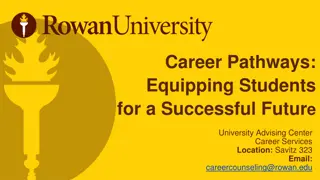Career Exploration and Preparation Activities for Students
Engage students in career exploration and preparation with interactive activities such as reality checks, online tools, and research projects. Help students understand the connection between skills, interests, education, and career pathways. Encourage them to explore different types of education/training, salary expectations, and job requirements to make informed career decisions.
Download Presentation

Please find below an Image/Link to download the presentation.
The content on the website is provided AS IS for your information and personal use only. It may not be sold, licensed, or shared on other websites without obtaining consent from the author.If you encounter any issues during the download, it is possible that the publisher has removed the file from their server.
You are allowed to download the files provided on this website for personal or commercial use, subject to the condition that they are used lawfully. All files are the property of their respective owners.
The content on the website is provided AS IS for your information and personal use only. It may not be sold, licensed, or shared on other websites without obtaining consent from the author.
E N D
Presentation Transcript
Career Exploration Learning Objectives: Students can give at least two examples of how individual skills and interests relate to a variety of career pathways. Students understand what training and education is required to find success in a variety of careers.
Career Exploration Kick-off Activity: Reality Check video from CAREERwide Education: https://vimeo.com/iseek/realitycheck. Meet Dave, a 22 year old, about to graduate college. His big dreams consist of making $150k a year, own a big house and multiple nice cars, and take lots of vacations with friends. After watching the video, answer the following questions: What were Dave s big dreams upon graduating from college? How much did Dave think he would make as a Software Developer? Why aren t Dave s plans very realistic? How does that impact his big dreams?
Career Exploration Classroom Activity: Use an online Reality Check tool , Jump$tart: http://www.jumpstart.org/reality- check.html Imagine you just graduated from high school and are about to embark on the adventure of adulthood. As a group, answer the following Reality Check tool questions for your own Dave character. Decide answer to each question and click on answer. How much salary will your character need to meet their lifestyle choice? What are some jobs that can support such a lifestyle? What education level provides that hourly wage? Is your character s lifestyle dreams realistic?
Map It Online Activity: Explore different types of education or training. Explore the relationship between how much education or training you have and how much money you earn. Education Goals
Career Exploration : Practice your research skills associated with career exploration. 1. Choose a career from your interest list. 2. Gather information from job descriptions, Career Central, O*NET, and other websites to learn more about job duties, responsibilities, required education/training, minimum experience, earnings, and advancement opportunities. Career Research Activity 3. Consider geographic locations, benefits, and other information related to the Labor Market. 4. Use the Big 6 Getting Started or Research Project Organizer handouts to organize your project 5. Choose the best mode of representation and expression for capturing and sharing research information. Suggestions include: PowerPoint or Prezi presentation, short video, story board, multi-media format, or lecture.
How can you use what you know about your identity and personality to make a good job match? Map It Online Activity: Next Steps
Map It Online Activity: Career Clusters are groups of jobs that require similar knowledge and skills. Ready, set, explore! Career Clusters
Career Exploration: Community Based Job Shadows
Map It Online Activity: Career Goals
Career Exploration: Create a list of local occupations to invite to an Occupation Interview. Ask the employer to share what their business is about and discuss career goals related to their occupation. Prepare by researching the company beforehand to build background knowledge and develop meaningful questions. Occupation Interview Questions may include: How did you get this job? What kind of training/certification is needed? Describe your typical work day. What 3 hard skills do you use most often? 3 soft skills? What are entry level jobs in your field? What are examples of career goals related to your field? Here are my strengths. How do they fit in this field? Follow up with a thank you note for each interviewee.
Career Exploration: Watch Biz Kid$ It s A Job Getting a Job on DCMP: https://www.dcmp.org/media/7094-biz-kid-it-s-a-job-getting-a- job/stream?digest=34716 (watch the first 4:20 seconds for this activity) Meet Ray, the owner of Fabulous, a motor coach company. Students are introduced to Ray (owner), Larry (driver), and Hilary (Human Resource Representative). Discuss these various job within a single company (occupation). It s a Job Getting a Job Activity What are the roles and responsibilities of each person? What are the skills needed for each job? What does Hilary look for in a potential employee? What advice does Ray offer? Which role would be best for you based on your Learning Style Inventory and Multiple Intelligence Assessment from Section One?
Career Exploration: Independently complete a Jump$tart online reality Check: http://www.jumpstart.org/reality-check.html (or use your state s CIS Reality Check program). Answer the questions to the best of your abilities by clicking on the answer. Reality Check In pairs or small groups, discuss the following questions: Are your results what you expected? Do the jobs align with your job zone or career cluster? What level of education do you need to reach your needed salary? Are your lifestyle goals realistic?
Career Exploration: Start your Career Portfolio for both employment and post-secondary education/training programs. Gather material in a binder, or accordion file, or students upload materials to a free online ePortfolios, such as Pathbrite (https://pathbrite.com/#maker). Portfolio materials may include the following items: achievements, best course work, special projects, and extracurricular activities. Within a Career Portfolio, show what you know and who you are through a visual collection of meaningful material. (Teacher s Note: If using ePortfolio- choose resources that may help students get started): Ohio Department of Administrative Services: http://das.ohio.gov/Portals/0/DASDivisions/HumanResources/LPD/pdf/LPD_Care erPortfolio.pdf Oklahoma Department of Career and Technology: https://www.okcareertech.org/educators/career-and-academic- connections/11756CarActFile.pdf Heritage High School 21st Century Digital Portfolio: http://heritage.nn.k12.va.us/career_portfolios.html Maine Career Advantage: http://www2.sfasu.edu/cte/Michelle_Files/HMS_102_Web_Content/career_portf olio.pdf Career Portfolio
Career Exploration: Start your resume, a tool that summarizes your qualifications: Contact information Education Work/Volunteer experiences Skills Abilities Resume Resumes are included in your Career Portfolio and required by most Human Resources departments for applicants. Access resume builder programs through your state s Career Information Systems (CIS), templates in computer software, and a variety of other online programs. Save 3 file types of your resume by graduation: original (word doc or other compatible format), a pdf, and plain text (for online submission).
Career Exploration: A Visual Resume is similar to a traditional resume, but offers employers a visual representation of who you are and what you can do. Access the Visual Resume Template and Allison s Visual Resume Example handouts to help create a visual resume. Highlight your individual skills and connect your interest to the career field. Include your interests/passion, previous volunteer, work, or intern experience, and soft and hard skills. Keep your Visual Resume short, specific, and show the job seeker images of you actively performing job tasks. At the end, you may choose to include personal references, work samples, and links to relevant online portfolios. Helpful guidelines for creating a visual resume: Profile picture should be of student and look professional (not with family members, pets, etc) Highlight positive hard and soft skills and relate to skills to the work setting. Share examples of high quality work or other helpful resources related to career field. Beside profile picture, all other pictures should relate to job tasks or show skills related to position. Visual Resume
Career Exploration: Pick one of the careers you chose to further explore and answer the following questions: Name of occupation List two skills and/or interests you have that support this occupation. What level of education or training is needed? Exit Ticket
